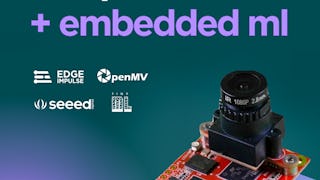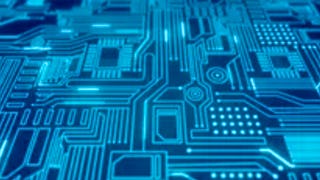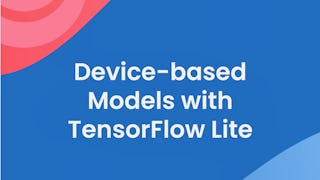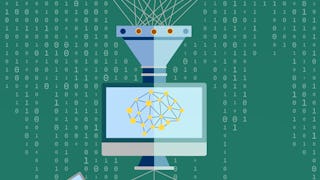Maschinelles Lernen (ML) ermöglicht es uns, Computern beizubringen, Vorhersagen und Entscheidungen auf der Grundlage von Daten zu treffen und aus Erfahrungen zu lernen. In den letzten Jahren wurden die Algorithmen für maschinelles Lernen, die Software-Frameworks und die eingebettete Hardware unglaublich optimiert. Dadurch ist es möglich, tiefe neuronale Netze und andere komplexe Algorithmen des maschinellen Lernens auf stromsparenden Geräten wie Mikrocontrollern auszuführen. Dieser Kurs gibt Ihnen einen umfassenden Überblick darüber, wie maschinelles Lernen funktioniert, wie man neuronale Netze trainiert und wie man diese Netze auf Mikrocontrollern einsetzt, was als eingebettetes maschinelles Lernen oder TinyML bezeichnet wird. Sie benötigen keine Vorkenntnisse im Bereich maschinelles Lernen, um an diesem Kurs teilzunehmen. Vertrautheit mit Arduino und Mikrocontrollern ist ratsam, um einige Themen zu verstehen und die Projekte in Angriff zu nehmen. Ein wenig Mathematik (Ablesen von Plots, Arithmetik, Algebra) ist für die Tests und Projekte ebenfalls erforderlich. Wir werden die Konzepte und das Vokabular behandeln, die für das Verständnis der Grundlagen des maschinellen Lernens erforderlich sind, und Ihnen anhand von Demonstrationen und Projekten praktische Erfahrungen vermitteln.

Genießen Sie unbegrenztes Wachstum mit einem Jahr Coursera Plus für 199 $ (regulär 399 $). Jetzt sparen.

Einführung in eingebettetes maschinelles Lernen


Dozenten: Shawn Hymel
53.332 bereits angemeldet
Bei enthalten
(746 Bewertungen)
Empfohlene Erfahrung
Was Sie lernen werden
Die Grundlagen eines maschinellen Lernsystems
Wie man ein Modell für maschinelles Lernen auf einem Mikrocontroller einsetzt
Wie man maschinelles Lernen nutzt, um Entscheidungen und Vorhersagen in einem eingebetteten System zu treffen
Kompetenzen, die Sie erwerben
- Kategorie: Digitale Signalverarbeitung
- Kategorie: Datenanalyse
- Kategorie: Künstliche neuronale Netze
- Kategorie: Eingebettete Systeme
- Kategorie: Datenethik
- Kategorie: Deep Learning
- Kategorie: Vorverarbeitung der Daten
- Kategorie: Eingebettete Software
- Kategorie: Computerprogrammierung
- Kategorie: Feature Technik
- Kategorie: Angewandtes maschinelles Lernen
- Kategorie: Modell-Bereitstellung
- Kategorie: Künstliche Intelligenz und Maschinelles Lernen (KI/ML)
- Kategorie: Faltungsneuronale Netzwerke
- Kategorie: Modell Bewertung
- Kategorie: Maschinelles Lernen
Wichtige Details

Zu Ihrem LinkedIn-Profil hinzufügen
14 Aufgaben
Erfahren Sie, wie Mitarbeiter führender Unternehmen gefragte Kompetenzen erwerben.

In diesem Kurs gibt es 3 Module
In diesem Modul werden wir das Konzept des maschinellen Lernens vorstellen, wie es zur Problemlösung eingesetzt werden kann und wo seine Grenzen liegen. Wir werden auch darauf eingehen, wie maschinelles Lernen auf eingebetteten Systemen wie Einplatinencomputern und Mikrocontrollern effektiv zur Lösung von Problemen und zur Schaffung neuartiger Computerschnittstellen eingesetzt werden kann. Dann werden wir das Edge Impulse Tool vorstellen und Bewegungsdaten für eine "Zauberstab"-Demo sammeln. Schließlich werden wir die verschiedenen Merkmale untersuchen, die aus diesen rohen Bewegungsdaten berechnet werden können, einschließlich des quadratischen Mittelwerts (RMS), der Fourier-Transformation und der spektralen Leistungsdichte (PSD).
Das ist alles enthalten
13 Videos15 Lektüren5 Aufgaben2 Diskussionsthemen
In diesem Modul werden wir uns ansehen, wie neuronale Netze funktionieren, wie man sie trainiert und wie man sie zur Durchführung von Inferenzen in einem eingebetteten System verwendet. Wir werden die vorherige Demo zur Erstellung eines Bewegungsklassifizierungssystems mit Bewegungsdaten, die von einem Smartphone oder einem Arduino-Board gesammelt wurden, fortsetzen. Schließlich werden wir Sie mit einem neuen Projekt zur Bewegungsklassifizierung herausfordern, bei dem Sie die Gelegenheit haben werden, die in diesem und dem vorherigen Modul erlernten Konzepte zu implementieren.
Das ist alles enthalten
10 Videos10 Lektüren5 Aufgaben1 Diskussionsthema
In diesem Modul behandeln wir die Audioklassifizierung auf eingebetteten Systemen. Insbesondere werden wir die Grundlagen der Extraktion von Mel-Frequenz-Cepstral-Koeffizienten (MFCCs) als Merkmale aus aufgezeichneten Audiodaten, das Training eines neuronalen Faltungsnetzwerks (CNN) und den Einsatz dieses neuronalen Netzwerks auf einem Mikrocontroller besprechen. Außerdem gehen wir auf einige der Implementierungsstrategien für eingebettete Systeme ein und sprechen darüber, wie maschinelles Lernen im Vergleich zur Sensorfusion funktioniert.
Das ist alles enthalten
9 Videos7 Lektüren4 Aufgaben1 Diskussionsthema1 Plug-in
von
Mehr von Maschinelles Lernen entdecken
 Status: Vorschau
Status: VorschauEdge Impulse
 Status: Vorschau
Status: Vorschau Status: Kostenloser Testzeitraum
Status: Kostenloser TestzeitraumDeepLearning.AI
 Status: Vorschau
Status: VorschauDuke University
Warum entscheiden sich Menschen für Coursera für ihre Karriere?




Bewertungen von Lernenden
746 Bewertungen
- 5 stars
81,76 %
- 4 stars
16,21 %
- 3 stars
1,87 %
- 2 stars
0 %
- 1 star
0,13 %
Zeigt 3 von 746 an
Geprüft am 23. Sep. 2021
Thanks for detailed and well introduced topics, I enjoyed this course. I had prior knowledge in neural networks but this course was awsome for introducting ML for microcontrollers.
Geprüft am 11. Juli 2022
Highly recommended for anyone looking for embedded AI. For any starter, intermediate or advanced guys!
Geprüft am 16. Aug. 2021
wonderful course for those who wish to begin their machine learning / embedded device journey.Highly recommended
Häufig gestellte Fragen
Für die Teilnahme an diesem Kurs ist keine Hardware erforderlich. Wir empfehlen jedoch den Kauf eines Arduino Nano 33 BLE Sense, um die optionalen Projekte durchführen zu können. Links zu Websites, die das Board verkaufen, finden Sie im Kurs.
Wir empfehlen Ihnen einige Erfahrung mit eingebetteten Systemen (z.B. mit der Programmierung eines Arduino-Boards oder eines anderen Mikrocontrollers) und Vertrautheit mit der/den Sprache(n) C/C++. Es sind keine Vorkenntnisse im Bereich des maschinellen Lernens erforderlich (aber wenn Sie schon welche haben, könnte dieser Kurs eine gute Wiederholung sein). Sie werden einige mathematische Kenntnisse (Ablesen von Plots, Arithmetik und Algebra) benötigen, um die Quiz und Projekte zu bearbeiten.
Um Zugang zu den Kursmaterialien und Aufgaben zu erhalten und um ein Zertifikat zu erwerben, müssen Sie die Zertifikatserfahrung erwerben, wenn Sie sich für einen Kurs anmelden. Sie können stattdessen eine kostenlose Testversion ausprobieren oder finanzielle Unterstützung beantragen. Der Kurs kann stattdessen die Option "Vollständiger Kurs, kein Zertifikat" anbieten. Mit dieser Option können Sie alle Kursmaterialien einsehen, die erforderlichen Bewertungen abgeben und eine Abschlussnote erhalten. Dies bedeutet auch, dass Sie kein Zertifikat erwerben können.
Weitere Fragen
Finanzielle Unterstützung verfügbar,





